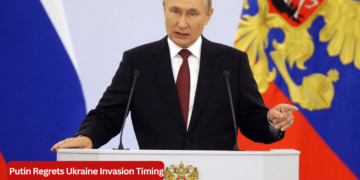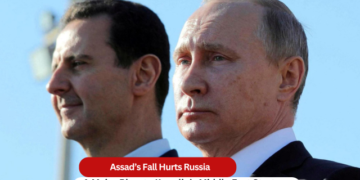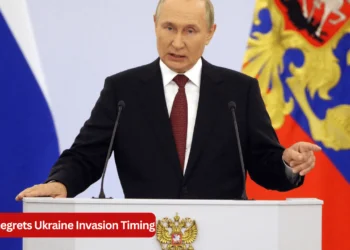In what state media referred to as a “accidental” or “emergency” deployment of air ordnance, a Russian warplane dropped a bomb on a city of more than 400,000 people late on Thursday, producing a crater 20 metres (65 feet) across, blowing a car into a roof, and damaging buildings.
The “accidental” munitions drop occurred while a Russian Su-34 twin-engine fighter-bomber was flying above the city of Belgorod, which is located 40 kilometres (24.8 miles) north of the Ukrainian border, according to reports from the state news agency RIA Novosti.
“An emergency release of an air ordnance occurred on April 20 at around 22:15 Moscow time, while a Su-34 aircraft of the Russian Aerospace Forces was performing a flight above the city of Belgorod,” the Russian Defence Ministry told TASS.
According to Vyacheslav Gladkov, the governor of the Belgorod area, “it happened at the intersection of one of the central streets, leaving a huge impact crater with a radius of 20 metres.”
RIA Novosti reported that a car that had overturned had fallen into a store’s roof.
Numerous residential buildings were damaged in the explosion, according to Belgorod Mayor Valentin Demidov, who posted on his Telegram channel.
According to reports, the explosion injured two persons, said Gladkov.
When it reported in December that a “new batch of frontline bombers” had been delivered to Russian military to employ against Ukraine, Russian official media bragged about the nation’s Su-34 warplanes. There was no mention of how many delivered planes there were.
“The Su-34 bomber will provide the Russian frontline aircraft with their primary striking capability. A TASS article at the time stated that the updated Su-34 warplane has expanded combat capabilities that allow it to use modern air-launched weapons, enhance the range of attacking ground and naval targets, and broaden the conditions and accuracy of bombing flights.
The aircraft are capable of transporting both guided and unguided bombs, air-to-air and air-to-surface missiles, and other types of armaments.
The type of weapon that struck Belgorod late on Thursday night was not disclosed by the Russian state media.
Since the war started, Moscow’s Su-34 fleet has suffered severe losses, with some estimates placing the destruction rate at 10% or more. The open source intelligence website Oryx, based in the Netherlands, claims to have photographic proof of 19 of the planes lost in both combat and non-combat situations.
Peter Layton, a visiting fellow at the Griffith Asia Institute and a former officer in the Royal Australian Air Force, said a pilot may dump bombs in “odd” conditions, such as when their aircraft loses power or, in the instance of a Su-34, when one of its two engines fails.
But he described the events of Thursday in Belgorod as “odd” for a number of reasons.
The weapon first detonated. Ordnance is often discharged in a “safe” mode during an emergency to prevent detonation, unless “the bomb’s explosive filing is very sensitive to shock.”
Second, a pilot would typically drop a bomb in an area with no people.
“Where the bomb hit; the town centre, not in the countryside, almost suggests accuracy,” remarked Layton.
Thirdly, a warplane would be expected to drop all of its weapons in the event of an emergency rather than just one. “Maybe they were, but only one exploded,” Layton speculated.
Since Russia invaded the neighbouring Ukraine in February 2022, the Belgorod region has witnessed a number of explosions and bombings.
Earlier this week, a community in the area that was close to the Ukrainian border was attacked by Kiev’s forces, according to a Telegram post by Gladkov.
Two drones reportedly dropped miniature bombs at nearby thermal power facilities, according to local media who cited an unnamed source.
Ukraine refused to admit to being involved in that incident.
According to Andrii Yusov, a representative of the Defence Intelligence of Ukraine, “We will not confirm or deny [Ukraine’s involvement],” in remarks shown on Ukrainian state television on Monday.
“I believe that Russians should get used to the fact that there are no safe havens on their soil while they are waging an unjust war of aggression.”
Every member of the Russian leadership who supports fascism and lives in Russia has already experienced the war, he continued.













































